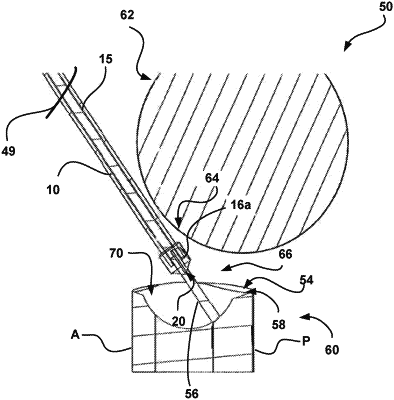| CPC A61B 17/1684 (2013.01) [A61F 2/4081 (2013.01); A61F 2002/30233 (2013.01); A61F 2002/30818 (2013.01); A61F 2002/30879 (2013.01); A61F 2002/30881 (2013.01); A61F 2002/30884 (2013.01); A61F 2230/0069 (2013.01)] | 20 Claims |

|
1. A system for repairing a defect on a portion of an articular surface of a patient's glenoid, the system comprising:
an excision device comprising:
a cannulated shaft having a first open end and a second open end defining a longitudinally disposed passageway therebetween, the passageway configured to be advanced over a guide pin along a working axis, and
a reamer including at least one cutter configured to extend from the cannulated shaft, the at least one cutter including a cutting surface having a generally arcuate shape sweeping towards a proximal end of the cannulated shaft and configured to form a generally hemispherical excision site in the patient's glenoid when the excision device is rotated about, and advanced over, the guide pin;
wherein the cutting surface of the cutter further comprises at least one recess configured to form a radial groove in an articular surface of the glenoid; and
wherein the reamer and the cannulated shaft are configured to be advanced in a space between articular surfaces of the patient's humerus and scapula such that a rotational axis of the excision device is non-perpendicular to the glenoid articular surface.
|